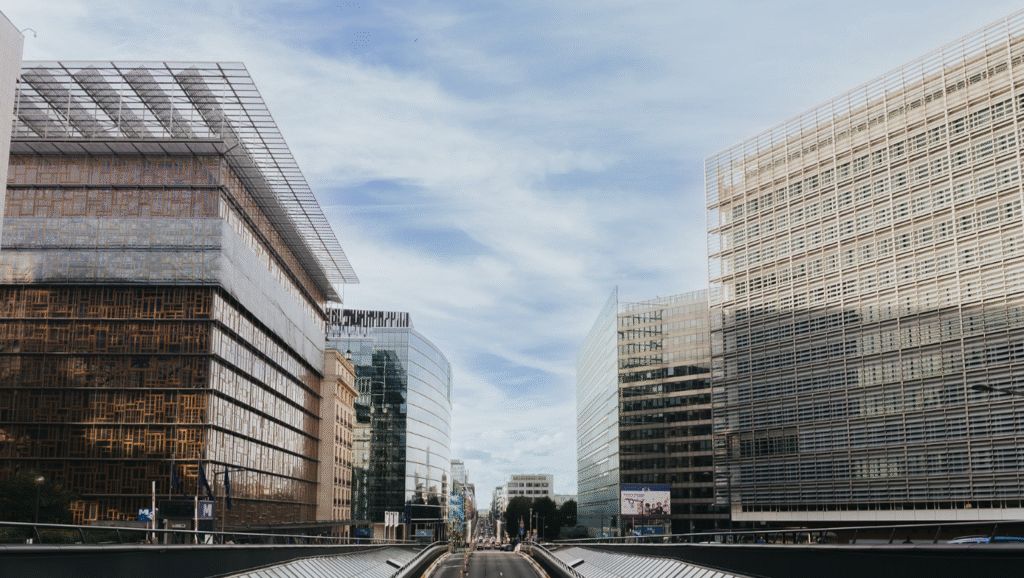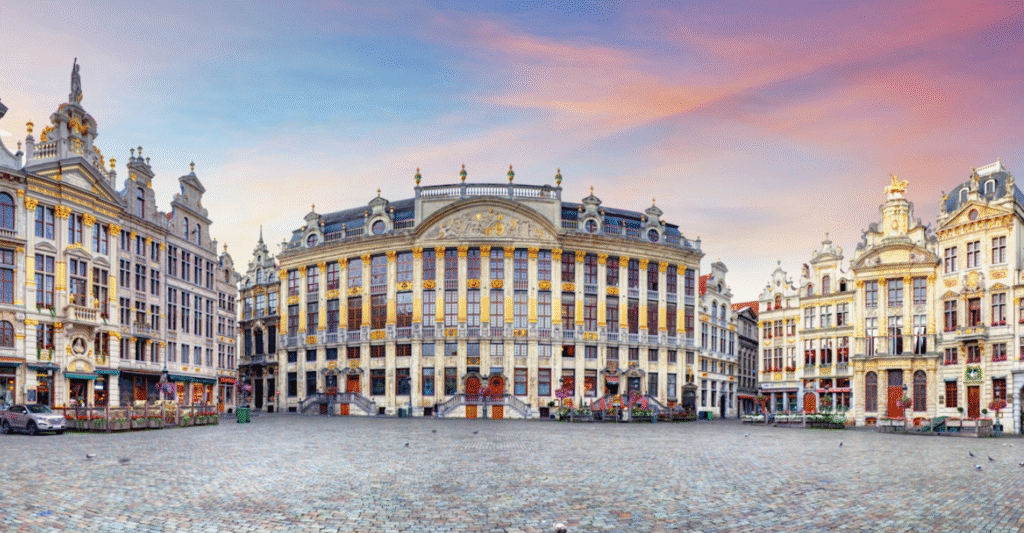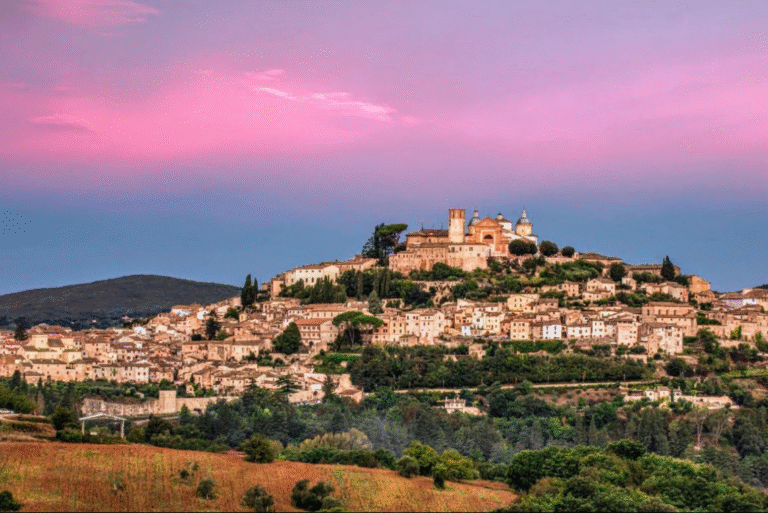Brussels: The European Capital of Chocolate, Politics, and Grand Architecture
Brussels, the heart of Belgium and the de facto capital of the European Union, is a city that seamlessly blends rich history, political influence, and world-renowned gastronomy. While it is often associated with European institutions and international diplomacy, Brussels is also a place of grand architecture, charming streets, and culinary delights that extend far beyond its famed waffles and fries. The city’s identity is a unique mix of French and Flemish cultures, expressed through its language, food, and artistic traditions. From the opulence of Grand Place to the quaint alleys lined with chocolatiers, from Art Nouveau masterpieces to modern political hubs, Brussels offers a multifaceted experience for travelers who seek both cultural depth and cosmopolitan energy. Whether indulging in handcrafted pralines, admiring ornate guildhalls, or navigating the corridors of European politics, Brussels invites visitors to explore its layers of history, creativity, and influence.
The Chocolate Capital: A Legacy of Belgian Craftsmanship
Belgium is synonymous with chocolate, and nowhere is this tradition more celebrated than in Brussels. The city is home to some of the world’s finest chocolatiers, each carrying on a legacy of craftsmanship that dates back to the 17th century. Walking through the city, the scent of melting cocoa drifts from artisanal chocolate shops, drawing visitors into a world of indulgence.
One of the most famous names in Belgian chocolate is Neuhaus, the inventor of the praline. Established in Brussels in 1857, Neuhaus remains a benchmark for fine chocolate, offering exquisite creations that combine tradition with innovation. Other historic chocolatiers, such as Godiva and Leonidas, have expanded globally but maintain their roots in Brussels, continuing to produce delicate truffles and ganaches that delight chocolate lovers worldwide.
For those who seek an intimate experience, small independent chocolatiers such as Pierre Marcolini, Mary, and Laurent Gerbaud offer handcrafted chocolates with unique flavors, incorporating exotic spices, rare cocoa beans, and unexpected ingredients. Many of these chocolatiers welcome visitors into their workshops, offering tastings and insights into the meticulous process of tempering, molding, and filling chocolates.
Brussels also celebrates its chocolate heritage through the Choco-Story Museum, where visitors can learn about the history of cocoa, the evolution of Belgian chocolate, and the artistry behind praline-making. Chocolate tours throughout the city offer an opportunity to sample different styles, from classic milk chocolates to experimental dark varieties infused with fruit, liqueurs, and spices.

The Political Heart of Europe: Brussels as a Global Hub
Brussels is more than just Belgium’s capital—it is the administrative and political hub of Europe. As the headquarters of the European Union, the city plays a crucial role in shaping policies that impact millions of people. The European Quarter, home to institutions such as the European Parliament, the European Commission, and the Council of the European Union, is a fascinating district where history and modern governance collide.
Visitors can explore the Parlamentarium, an interactive museum that provides an in-depth look at the workings of the EU, its history, and its decision-making processes. Guided tours of the European Parliament allow visitors to witness debates, understand the legislative process, and see where key decisions affecting the continent are made.
Beyond the EU, Brussels is also home to NATO headquarters, numerous embassies, and international organizations, making it a truly global city. The cosmopolitan nature of the city is reflected in its multilingual population, diverse culinary scene, and international events that bring together policymakers, journalists, and diplomats from around the world.
Despite its political importance, Brussels retains a welcoming and relaxed atmosphere, where grand political buildings coexist with lively cafés, green parks, and bustling marketplaces. The juxtaposition of high-stakes diplomacy and everyday life gives the city a unique rhythm, making it an intriguing destination for those interested in global affairs and cultural exploration alike.

Grand Architecture: A City of Opulence and Innovation
Brussels is a city of stunning architecture, where medieval grandeur meets avant-garde design. The most breathtaking example of this architectural splendor is Grand Place, the city’s central square and a UNESCO World Heritage site. Surrounded by opulent guildhalls adorned with gilded facades, intricate sculptures, and elaborate carvings, Grand Place is often described as one of the most beautiful squares in the world. The Town Hall, with its soaring Gothic spire, dominates the square, while the Maison du Roi (King’s House) houses the Museum of the City of Brussels, offering a glimpse into the city’s past.
Beyond Grand Place, Brussels boasts an impressive collection of Art Nouveau architecture, pioneered by Belgian architects such as Victor Horta. The Horta Museum, located in the former home of the architect, showcases his innovative designs, characterized by fluid lines, ornate ironwork, and natural light. Other Art Nouveau masterpieces, including Hôtel Tassel and Maison Cauchie, highlight Brussels’ role in shaping this distinctive architectural movement.
For those who appreciate contemporary design, the Atomium stands as an iconic symbol of modern Brussels. Originally constructed for the 1958 World Expo, this futuristic structure represents an iron molecule magnified 165 billion times. Today, it serves as a museum and observation deck, offering panoramic views of the city’s skyline.
Brussels’ eclectic architectural landscape also includes the Royal Palace, a neoclassical masterpiece that serves as the official residence of the Belgian monarchy, and the Palais de Justice, one of the largest courthouses in the world. Meanwhile, neighborhoods like Ixelles and Saint-Gilles reveal a mix of ornate townhouses, modernist apartments, and hidden courtyards, offering a glimpse into the city’s architectural diversity.
While Brussels is often overshadowed by more tourist-heavy European capitals, its architectural beauty and historical richness make it a rewarding destination for those who appreciate design, history, and artistic heritage.
Brussels is a city that defies simple categorization. It is at once a political powerhouse, a haven for chocolate lovers, and a showcase of grand architecture. The city’s ability to blend tradition with modernity, governance with creativity, and diplomacy with warmth makes it a truly unique European capital. Whether indulging in world-class pralines, exploring the corridors of European power, or marveling at centuries-old facades, visitors to Brussels will find a city that is as intellectually stimulating as it is culturally rich. In every chocolatier, museum, and square, Brussels tells the story of a city that has shaped history while embracing the future, offering an experience that is both refined and welcoming. For those who seek a city that balances elegance, influence, and indulgence, Brussels stands as an essential destination in the heart of Europe.







